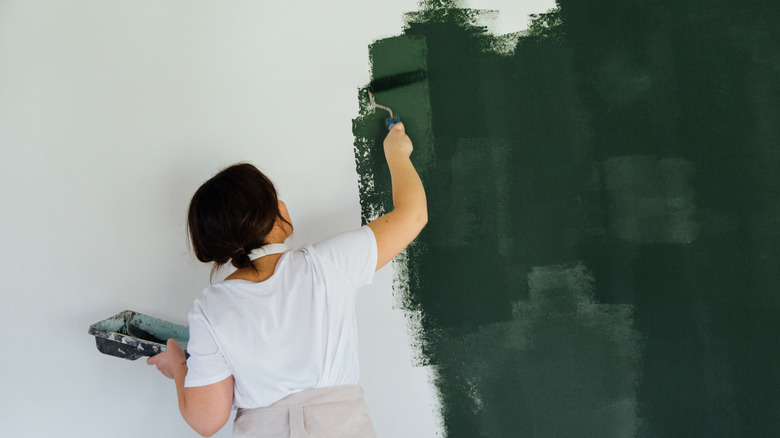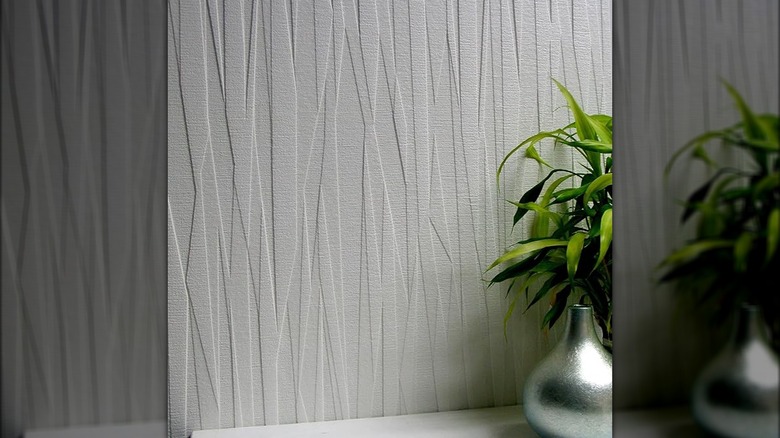Add Stunning Texture To Your Home With This Easy Paint Trick
We may receive a commission on purchases made from links.
Anyone who lived through the sponge painting trend in the 1990s can attest to the way that different painting techniques can completely change the texture and appearance of a home's interior walls. Back when sponge painting — which is now a trend Pinterest recommends avoiding if you plan to sell your home — was in fashion, it had perhaps become popular as a way to bring back visual interest after wallpaper went out of style. Interestingly, wallpaper making a huge comeback in recent years has led to the emergence of a new painting technique: painting over textured wallpaper.
Wallpaper isn't what it once was. With the rise of modern peel-and-stick wallpaper, there is a staggering variety of patterns and textures to choose from for those who want to embrace printed walls or a textured paint job. If you aren't ready to rock the wallpaper look on your walls but you would like to embrace a style that's a little more intriguing than plain paint, consider strategically painting over textured wallpaper for unique walls.
How to use wallpaper to create a textured paint job
The easiest and most advisable way to go about painting over wallpaper to create a textured paint job on your walls is to simply purchase a textured wallpaper that is designed to be painted over. There are many options on the market for white paintable wallpapers in a wide array of textured patterns, including beadboard, florals, vines, and even Victorian tin ceiling. For example, you can currently buy a double-roll bolt of Maxwell vinyl textured paintable wallpaper on Amazon for $29.88. Simply apply the wallpaper to the wall following the manufacturer's instructions and then paint over it.
Interested in painting over your existing textured wallpaper? Doing so shouldn't be a problem as long as the wallpaper is in good shape, but it may require some additional preparation. You'll need to thoroughly clean the wallpaper and then use wallpaper adhesive to re-adhere any seams or corners that have lifted. Then, apply a primer before moving onto painting for a perfectly textured wall.

